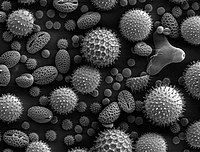
Photo from wikipedia
Abstract Formaldehyde is a common poisonous and harmful substance in food. The detection of formaldehyde is of great significance in food analysis. In this study, a rapid and sensitive quantitative… Click to show full abstract
Abstract Formaldehyde is a common poisonous and harmful substance in food. The detection of formaldehyde is of great significance in food analysis. In this study, a rapid and sensitive quantitative detection method for formaldehyde (HCHO) has been developed based on surface-enhanced Raman scattering (SERS) using a 4-amino-3-hydrazino-5-mercapto-1,2,4-triazol (AHMT)-formaldehyde derivative reaction. Gold nanorods (GNRs) were synthesized by a seed growth method to facilitate the collection of the SERS spectra of the extracts. After optimizing several parameters, including the aspect ratios of the GNRs, the multi-hotspots formed by the solvent and microenvironment around the GNRs, the dosages of different reagents, and the selectivity and uniformity of the methods were explored. The SERS analysis of the pure formaldehyde solution used a wide dynamic concentration range from 1.089 nM to 1.089 mM, with the limit of detection (LOD) as low as 0.86 nM and an enhancement factor of 3.9×107. The recovery of this quantification method was calculated to be between 89.45% and 103.2%, and the relative standard deviation (RSD) was not more than 6.74% for intentionally contaminated rice noodles, steamed buns, and liquor. Compared to that in previous reports, this analytical method made full use of the enhanced function of GNRs to further reduce the detection limit of formaldehyde. In summary, the developed method has the advantages of simplicity, rapid performance, and cost effectiveness.
Journal Title: Microchemical Journal
Year Published: 2021
Link to full text (if available)
Share on Social Media: Sign Up to like & get
recommendations!